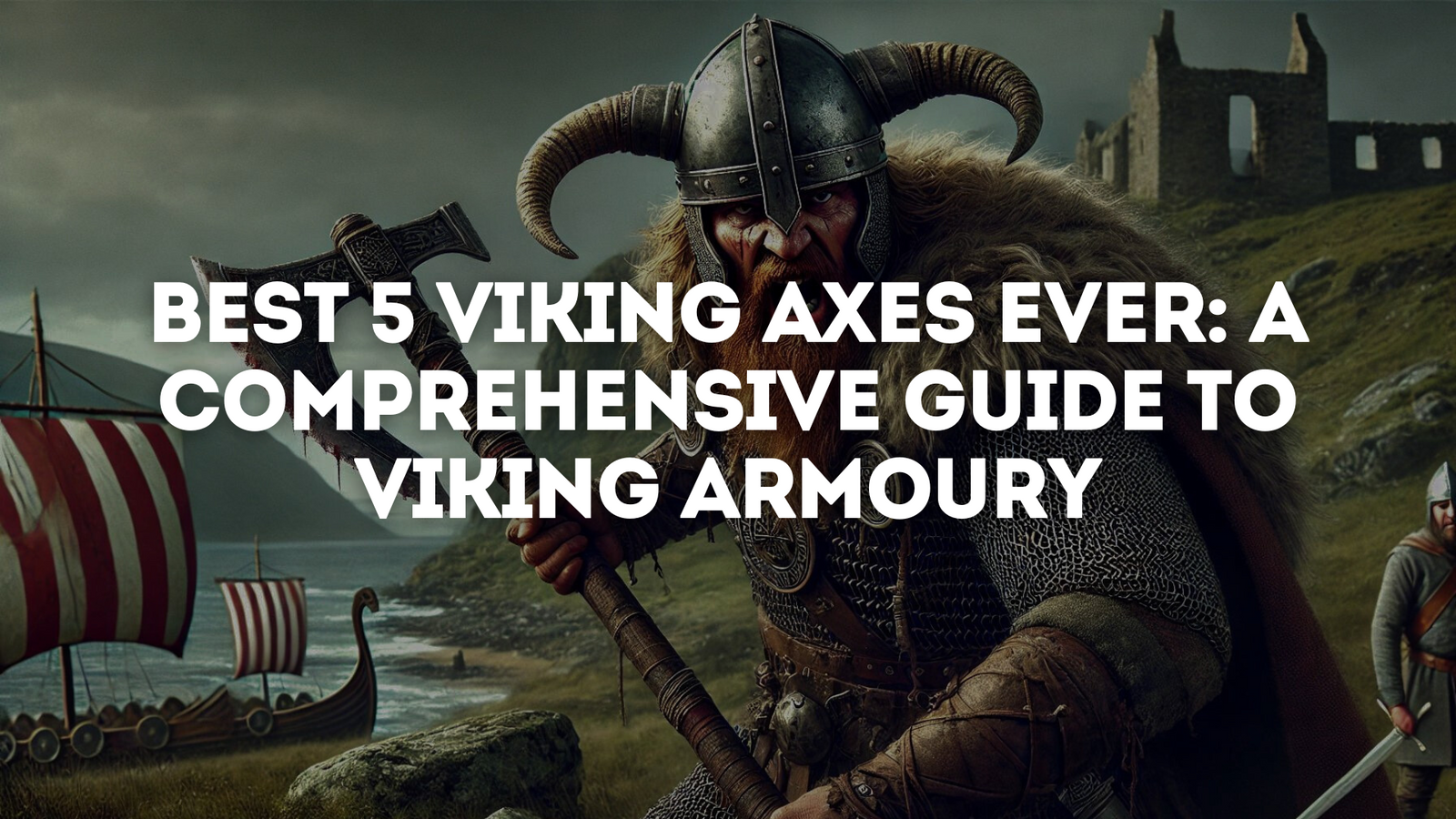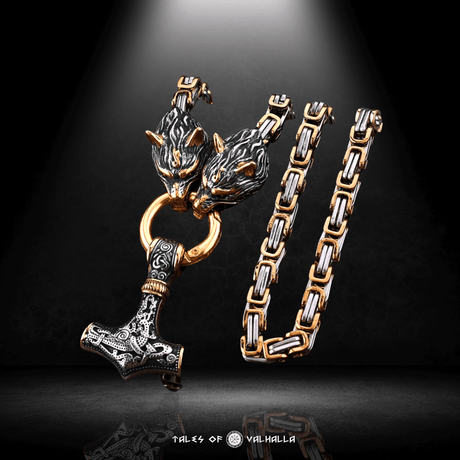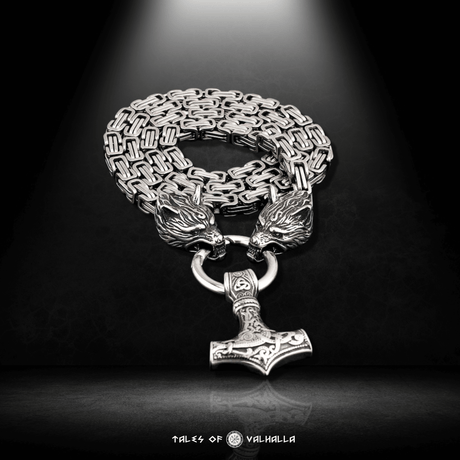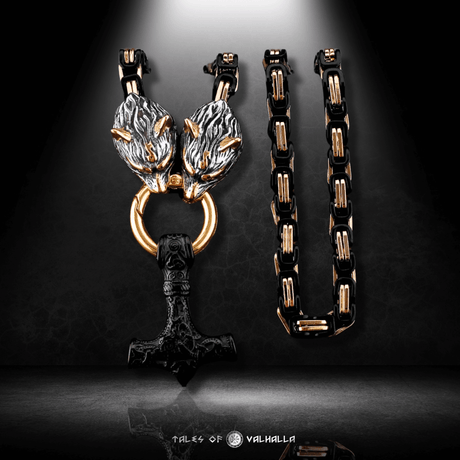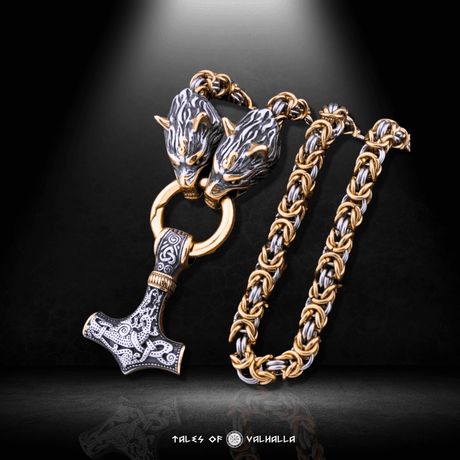The Viking Age, spanning from the late 8th to the early 11th centuries, was a time of exploration, conquest, and cultural expansion. Central to the Viking warrior’s arsenal was the axe, a tool that was not only practical for battle but also symbolic of their enduring power. In today’s world, Viking axes continue to capture the imagination of enthusiasts, collectors, and historical reenactors. This guide will take you through the best Viking axes, exploring both the craftsmanship behind them and their historical significance.
In this blog, we dive into five iconic Viking axes that not only reflect the craftsmanship of the time but also offer modern enthusiasts a connection to the past. Whether you're looking to own a piece of Viking history or simply want to learn more about the tools that helped shape a legendary era, this in-depth exploration will leave you inspired.
The Viking Axe as a Cultural Symbol
Viking axes were more than just weapons; they were symbols of status, wealth, and identity. Historically, the craftsmanship of an axe—its size, design, and material—often reflected the owner’s social standing. In battle, a Viking's axe would become an extension of themselves, embodying their skill and strength.
Axes also served as tools for daily life. Farmers, traders, and even sailors used them for chopping wood, constructing ships, and clearing land. This duality—a weapon and a tool—reinforced the practical mindset of Viking society, where survival and conquest went hand-in-hand. The axes we explore here all draw inspiration from this versatility.
The Role of Axes in Viking Mythology and Sagas
To understand the significance of Viking axes, one must also consider their place in Norse mythology. Axes were often linked to Viking gods and heroes, particularly in the sagas. Thor, the god of thunder, was associated with a mighty hammer, while other lesser-known figures, such as the dwarves, were said to have crafted legendary weapons using their smithing skills. The Vikings believed that possessing such weapons would imbue the owner with supernatural power.
The axes in this collection, though inspired by history, also capture this mystical connection. From Ragnar Lothbrok’s legendary axes to the symbolic engravings on the Winter’s Maelstrom Axe, each item tells a story of its own.
The Art of Viking Axe Craftsmanship
What makes a Viking axe truly great? For many, it's the blend of historical accuracy, aesthetic beauty, and practical functionality. Modern artisans who recreate these axes often rely on ancient techniques passed down through generations, adding a touch of modern craftsmanship to meet contemporary expectations.
In the Viking Age, axes were forged by master blacksmiths using iron and steel. A high-quality blade was essential, as it needed to be sharp enough to cut through armor and strong enough to withstand repeated blows. The handle was equally important, typically made from oak, ash, or other hardwoods, chosen for their durability and comfort in the hand.
The axes in this collection—whether they be throwing axes or battle-ready weapons—are crafted with the same attention to detail, ensuring both historical accuracy and modern usability.
Discover the Top 5 Viking Axes
Let’s delve into the top five Viking axes that every enthusiast should know about. Each of these axes offers a unique insight into Viking culture, warfare, and artistry.
1. Ragnar Lothbrok Norse Axe
The Ragnar Lothbrok Norse Axe is a stunning representation of Viking warfare. Inspired by the legendary Norse king Ragnar Lothbrok, this axe combines both beauty and brutality. Ragnar, known for his daring raids and fierce leadership, was a symbol of Viking power.
Storytelling Through the Ragnar Lothbrok Norse Axe
This axe is more than just a weapon—it’s a storytelling tool. Imagine Ragnar on the shores of England, standing with his men, wielding this very weapon. The bearded axehead, a common Viking design, allowed warriors to hook their opponent's shields, pulling them away and leaving them exposed to a deadly strike.
🔥 Check out "The Ragnar Lothbrok Norse Axe"

Ragnar Lothbrok Norse Axe
2. Ragnar Lothbrok Viking Bearded Axe
If the Ragnar Lothbrok Norse Axe represents sheer force, then the Ragnar Lothbrok Viking Bearded Axe is the epitome of precision. The bearded axehead was a design unique to the Viking Age, offering versatility in battle. With its extended lower edge, this axe could hook, pull, and strike with deadly accuracy.
The Tactical Advantage of the Bearded Axe
In close-quarters combat, Viking warriors needed weapons that could offer both offense and defense. The bearded axe was ideal for hooking an opponent's shield, pulling it away to expose them to a swift attack. This design made the Ragnar Lothbrok Viking Bearded Axe a favored weapon in battles where shields and armor were common.
🔥 Explore "The Ragnar Lothbrok Viking Bearded Axe"

Ragnar Lothbrok Viking Bearded Axe
3. The Winter’s Maelstrom Axe
The Winter’s Maelstrom Axe draws inspiration from the harsh Scandinavian winters, where survival depended on strength and endurance. This axe, with its intricate engravings, reflects the mystical side of Viking life—where myth and reality often intertwined.
A Tribute to Fimbulwinter
In Norse mythology, Fimbulwinter refers to the long, harsh winter that precedes the apocalyptic event known as Ragnarök. The Winter’s Maelstrom Axe pays tribute to this mythical season, with its cold steel and frost-like engravings. The balance and sharpness of this axe make it perfect for both battle and ceremonial display.
For those who appreciate Norse mythology and Viking artistry, this axe is a must-have.
🔥 Check out "The Winter’s Maelstrom Axe"

The Winter’s Maelstrom Axe
4. The Axe of Frimas
Named after the frost that clings to the mountains of the north, The Axe of Frimas embodies the cold, ruthless precision of Viking warriors. This axe was designed with both battle and display in mind, making it perfect for those who want a piece of Viking history to stand the test of time.
Frost and Fury: The Story of The Axe of Frimas
Winter was a time of preparation for the Vikings. It was a season where battles were fought less frequently, but the planning for future raids took place. The Axe of Frimas captures this spirit of winter’s fury, with a wide blade perfect for both chopping and combat. The cold engravings remind one of the frozen north, where the Vikings thrived despite the harsh conditions.
🔥 Check out "The Axe of Frimas"

5. The Mountain Dwarf’s Axe
Inspired by the mythical creatures of Norse legend, The Mountain Dwarf’s Axe is a tribute to the dwarves who were said to have forged the greatest weapons in Viking mythology. Known for their skill in metalwork, these dwarves created weapons that could harness the power of the gods.
Craftsmanship Meets Mythology
The Mountain Dwarf’s Axe brings together fantasy and reality. Its design is heavy and strong, mimicking the great axes used by dwarven blacksmiths in Norse mythology. Whether you're a fan of Viking history or Norse fantasy, this axe will stand out in any collection.
For those who appreciate fantasy as much as history, this axe offers the best of both worlds.
🔥 Explore "The Mountain Dwarf’s Axe"

The Mountain Dwarf’s Axe
The Importance of Viking Axes in Modern Reenactments
Viking reenactments have become increasingly popular in the United States, with enthusiasts gathering to relive the glory of the Viking Age. These events often feature historical battles, traditional Viking music, and, of course, the use of Viking weaponry. The best Viking axes from this collection are not only historically accurate but also durable enough to be used in reenactments.
Whether you’re engaging in a mock battle or displaying your axe in a competition, the craftsmanship behind these axes ensures they’ll stand up to the test of time.
Understanding the Different Types of Viking Axes
In Viking history, not all axes were created for the same purpose. There were specialized throwing axes, battle axes, and even ceremonial axes. Each had a distinct design that made it ideal for its specific role.
Viking Throwing Axe
The Viking throwing axe was designed for speed and precision. Vikings used these axes in the early stages of battle, throwing them at their enemies before engaging in close combat. The lightweight design allowed for easy throwing, while the sharp blade ensured a deadly impact.
Viking Battle Axe
The battle axe Viking warriors used was larger and heavier, designed for cleaving through shields, armor, and even wood. These axes were known for their destructive power, making them a favorite on the battlefield.
Ceremonial Axes
While Viking axes were primarily tools of war, some were used for ceremonial purposes. These axes were often engraved with symbols and were more ornate than their battle-ready counterparts. They were used in rituals and could be passed down as family heirlooms.
How to Choose the Best Viking Axe for You
Selecting the best Viking axe depends on what you plan to use it for. If you’re looking for a display piece that honors the craftsmanship of the Viking Age, an axe like The Winter’s Maelstrom Axe or The Axe of Frimas would be a perfect choice. If you’re more interested in practical use, such as for reenactments or Viking throwing competitions, then the Ragnar Lothbrok Viking Bearded Axe or the Mountain Dwarf’s Axe would offer both beauty and functionality.
Why Viking Axes Make the Perfect Collector’s Item
Viking axes are more than just historical artifacts—they’re pieces of art that tell a story. For collectors, owning a Viking axe is a way to connect with a time when craftsmanship and battle prowess were the cornerstones of Viking life. Each axe in this collection is crafted with historical accuracy in mind, ensuring that collectors receive a weapon that looks as if it were plucked from the hands of a Viking warrior.
The Future of Viking Axes
As interest in Viking culture continues to grow, so too does the demand for high-quality Viking axes. These weapons, whether used for reenactments, competitions, or as display pieces, offer a glimpse into a time when the axe was both a tool and a symbol of power. Modern craftsmen are constantly finding ways to improve upon traditional designs, ensuring that the Viking axe remains relevant in today’s world.
Conclusion
The Viking axes in this collection represent the pinnacle of craftsmanship, historical accuracy, and artistry. From the Ragnar Lothbrok Norse Axe to the Mountain Dwarf’s Axe, each weapon tells a unique story, offering collectors and enthusiasts a chance to own a piece of Viking history.
Whether you’re seeking a display piece or a functional tool for Viking reenactments, these axes are designed to meet the highest standards of both form and function. Dive into the world of Norse mythology and warfare, and let these legendary axes inspire your own Viking journey.
Explore the full collection today, and find the best Viking axe to add to your arsenal.
FAQs
1. What are the characteristics of a traditional Viking axe?
A traditional Viking axe was typically made of iron, featuring a long wooden handle and a sharp, broad blade. These axes were designed for versatility in both combat and daily tasks, with some being lightweight for throwing, while others, like the bearded axe, were built for powerful strikes in battle.
2. What makes a Viking axe different from other medieval weapons?
Viking axes were known for their simplicity, versatility, and efficiency. Unlike swords, which were more expensive to make, axes were affordable and effective in battle, capable of cleaving shields, cutting through armor, and being used for throwing. The "bearded" design provided a larger cutting surface while reducing the overall weight.
3. Were Viking axes used only in battle?
No, Viking axes were multifunctional tools. While they were fearsome weapons in battle, Viking axes were also used for everyday tasks like chopping wood, building ships, and other activities essential to Viking life.
4. What are the top 5 Viking axes featured in this guide?
The guide highlights five of the best Viking axes, including:
- Ragnar Lothbrok Norse Axe
- Ragnar Lothbrok Viking Bearded Axe
- The Winter’s Maelstrom Axe
- The Axe of Frimas
- The Mountain Dwarf’s Axe
Each of these axes is renowned for its craftsmanship, design, and connection to Viking history.
5. Why is the bearded axe design significant in Viking history?
The bearded axe design, with its extended lower blade, allowed Viking warriors to hook an opponent's shield or weapon, giving them a strategic advantage in battle. It also made the axe lighter without compromising its cutting ability, making it one of the most popular axe designs in the Viking Age.
6. How did Viking axes contribute to Viking success in battle?
Viking axes were crucial in the success of Viking warriors. They were easy to wield, could break through armor and shields, and were versatile in both close combat and ranged attacks. The axes’ effectiveness in hand-to-hand combat helped the Vikings achieve dominance during their raids across Europe.

